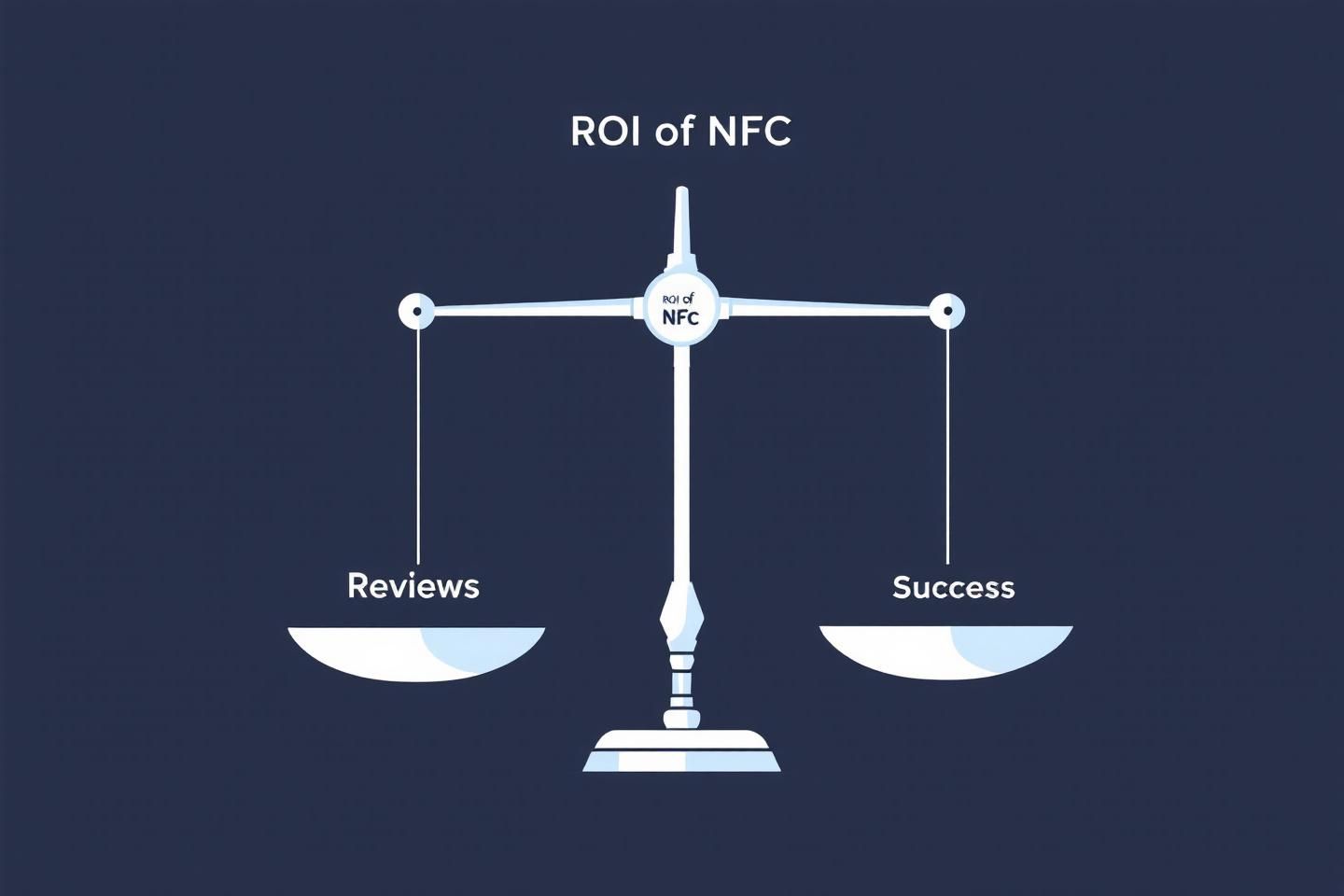In today's digital-first economy, local businesses are constantly seeking innovative ways to bridge the physical and digital realms of customer interaction. NFC cards have emerged as a powerful tool in this space, but measuring their actual return on investment requires a strategic approach and careful tracking.
Understanding the Basics of NFC Marketing
Near Field Communication (NFC) technology, often combined with printed QR codes for maximum accessibility, creates seamless pathways for customer engagement. While NFC cards represent an initial investment, their potential to drive reviews, increase customer interaction, and boost sales makes them particularly attractive for local businesses.
Tracking Review Generation
The first step in measuring ROI from NFC cards involves establishing a clear baseline of your current review situation. Start by documenting your existing review count and average rating across platforms before implementing NFC cards. Modern NFC marketing solutions typically provide backend analytics that show when and how often customers tap or scan your cards to leave reviews.
To effectively track review generation, consider these metrics:
- Monthly review volume before and after NFC card implementation
- The percentage of NFC taps that convert to actual reviews
- Average rating changes since implementing NFC cards
- Response rates to review requests through NFC versus other methods

Connecting Reviews to Revenue
The real power of NFC cards becomes apparent when linking increased reviews to actual sales figures. Modern point-of-sale systems can help track this correlation. Many local businesses report that a one-star increase in average rating can lead to a 5-9% increase in revenue.
Create specific tracking mechanisms by:
- Setting up unique landing pages for NFC card interactions
- Using distinct promo codes distributed via NFC cards
- Implementing customer surveys to understand how reviews influence purchasing decisions
- Monitoring foot traffic patterns before and after significant review increases
- Measuring Direct Sales Impact
NFC cards with printed QR codes can do more than just generate reviews - they can drive direct sales through:
- Digital menu access
- Loyalty program enrollment
- Special offer redemption
- Direct ordering systems
Track these conversions by:
- Monitoring tap-through rates to ordering pages
- Recording loyalty program sign-ups initiated through NFC cards
- Calculating the average transaction value for customers using NFC-accessed offers
- Comparing sales patterns between NFC card users and non-users
- Cost-Benefit Analysis
To calculate the true ROI of your NFC card investment, consider:
Initial Investment:
- Card production costs
- NFC technology implementation
- Staff training time
- Integration with existing systems
Ongoing Benefits:
- Increased review volume and rating improvements
- Higher customer engagement rates
- Direct sales through NFC-enabled transactions
- Reduced marketing costs compared to traditional methods
Long-term Value Creation
The compounding effect of NFC marketing becomes evident over time. As more customers interact with your NFC cards, you build a valuable digital footprint that continues to work for your business. Local businesses using NFC cards with printed QR codes often see sustained growth in both online visibility and physical foot traffic.
Practical Implementation Tips
To maximize ROI measurement accuracy:
- Use unique identifiers for different NFC card batches or locations
- Implement A/B testing with different card designs or calls-to-action
- Regular analysis of customer interaction patterns
- Integration with Google Analytics for digital tracking
- Future-Proofing Your Investment
As NFC technology continues to evolve, businesses should consider scalable solutions that can adapt to changing consumer behaviors. The combination of NFC cards and QR codes provides flexibility while ensuring accessibility for all customers, regardless of their device capabilities.
Conclusion
Measuring the ROI of NFC cards requires a comprehensive approach that considers both direct and indirect benefits. By implementing proper tracking systems and analyzing the data regularly, local businesses can not only justify their investment in NFC marketing but also optimize their strategies for maximum return. The key lies in understanding that NFC cards are not just a tool for boosting reviews or sales individually, but rather a comprehensive solution that bridges physical and digital customer experiences.
Remember to regularly review and adjust your tracking methods as technology evolves and customer behaviors change. With proper implementation and monitoring, NFC cards can become a cornerstone of your business's digital transformation strategy, delivering measurable returns across multiple aspects of your operations.

Share:
Improving Customer Experience: Merging NFC, QR Codes, and In-Store Tech
Building a Customer Feedback Loop with NFC and QR Codes